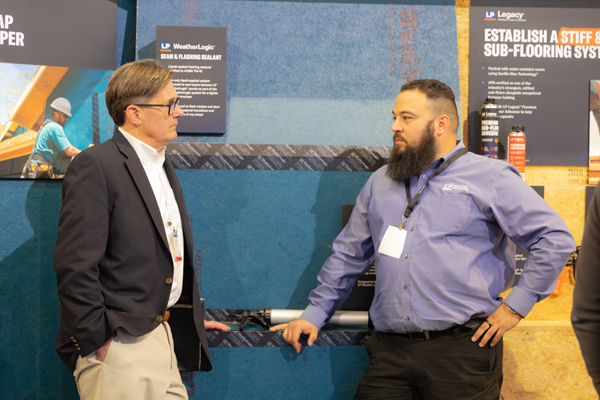Industry Trends5 min
Beyond the Jobsite: How to Contribute to the Building Industry
Builders know their work and understand the best methods of construction and timelines, yet many find it challenging to figure out how to affect change in the industry. As an authority in the industry, is there a way to spread your knowledge? Here's a primer on ways you can train the next generation and even drive immediate change in the industry.
Position Yourself in the Driver’s Seat
The annual International Builders’ Show (IBS) showcases the biggest and brightest of the construction industry. In addition to the immense exhibit space, the conference focuses on education, roundtable discussions and seminars.
The National Association of Home Builders (NAHB) is a resource for your peers and the younger generation to seek educational opportunities and hone their skills. Attending meetings—either on the national or local level—can offer an opportunity to provide valuable input and technical guidance on practical matters.
The annual NAHB Student Competition lets students apply lessons learned in the classroom to a real construction company. Proposals are judged by construction company executives. During the show, you can watch these students defend their proposals and judge for yourself the degree of practical knowledge of this group. Get involved by hosting a competition at your local college; bringing in area builders; or working with local ASHRAE, ASTM or AIA groups.
Navigating the Future of Construction
“Smart builders ask good questions so they are able to identify the bigger trends affecting our industry,” said Casey Smyth, Brand Manager for LP Structural Solutions.

Smyth identifies that the industry is changing in multiple ways. For example, the post-COVID world has shifted the features and amenities homeowners want in their homes. Additionally, the greater number of billion-dollar disasters shows the need for greater resiliency. In response, builders can work directly in their own communities with the local Habitat for Humanity chapter or help rebuild homes following a devastating storm.
Smyth also stresses education for helping to spread your knowledge. Many builders have found success marketing their businesses with an educational slant, helping people understand the reasons behind certain functional and design choices. The same is true for helping to train younger teams in a better approach to building.
Speaking of education, the industry can likely use your deep technical knowledge. Whether it's working with trade schools or nearby community colleges, practical real-world advice is always valued.
Looking for more business advice? See how one builder helped gain the trust of their clients after a tough weather event.
Continue Reading
Resiliency Solutions
5 minIntroducing LP® SmartSide® ExpertFinish® Naturals Collection™: Nature-Inspired Beauty Meets Engineered Performance
We’re excited to introduce the LP® SmartSide® ExpertFinish® Naturals Collection™, a bold new addition to our trusted line of engineered wood siding and trim that delivers the warmth and beauty of nature with the advanced protection and performance builders and homeowners expect.
Labor Solutions
5 minChoosing the Right LP® Structural Solutions Product for Your Build
When it comes to building strong, reliable, and high-performing structures, the materials you choose matter. At LP Building Solutions, we understand that every project, whether it's a single-family home or a multifamily development, requires structural components that meet your needs for strength, durability, and efficiency.
Sustainability Solutions
5 minBuilding a More Sustainable Future with LP Building Solutions
In today's world, sustainability is no longer just a buzzword, it's a blueprint for responsible living and smarter building. As the construction industry seeks ways to reduce its environmental footprint, LP Building Solutions is focused on providing innovative building materials for eco-conscious builders to help reshape what it means to build sustainably
News & Stories3 min
History of Partnership with Gary Sinise Foundation
The LP Foundation is a proud partner of the Gary Sinise Foundation, which supports wounded veterans in several ways. You can learn more about the LP Foundation here.